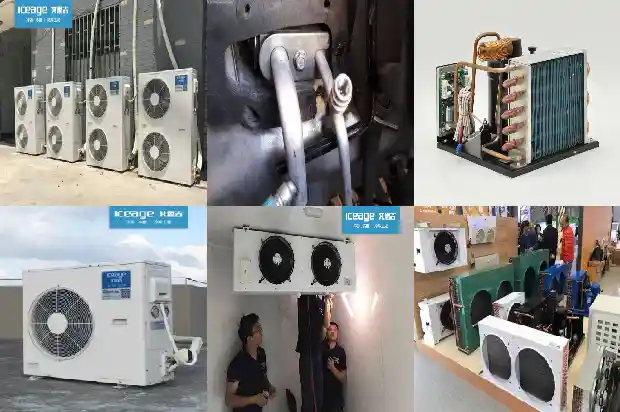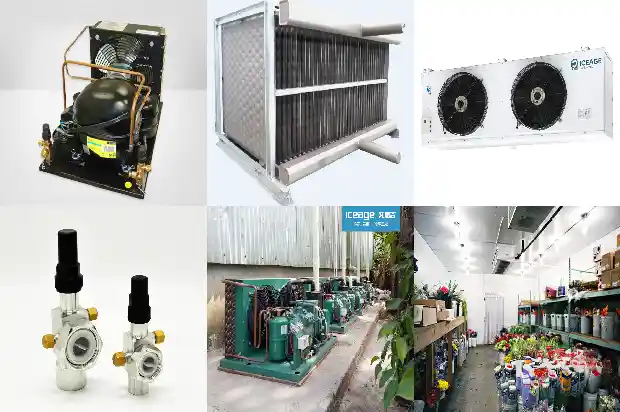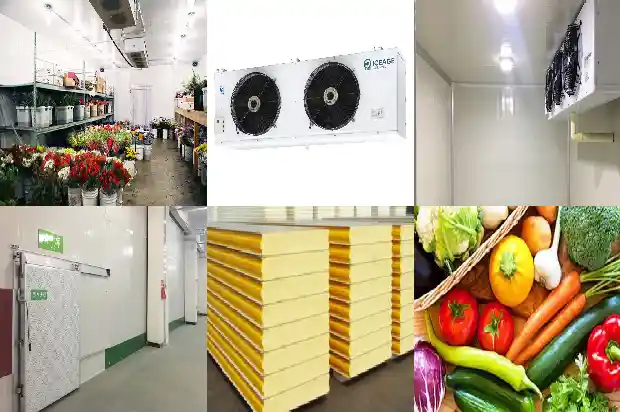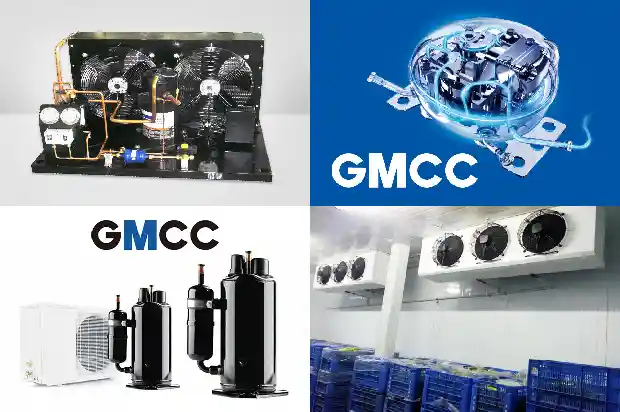Calculation of Current - carrying Capacity of Wires in Refrigeration Equipment
2025-03-18
When the working temperature is 30℃ and under 90% continuous long - term load, the current - carrying capacities are as follows:
1.5 square millimeters - 14A, 2.5 square millimeters - 26A, 4 square millimeters - 32A, 6 square millimeters - 47A
16 square millimeters - 92A
25 square millimeters - 120A
30 square millimeters - 150A
1.5 square millimeters - 14A, 2.5 square millimeters - 26A, 4 square millimeters - 32A, 6 square millimeters - 47A
16 square millimeters - 92A
25 square millimeters - 120A
30 square millimeters - 150A
Current to power conversion:
1A = 220W, 10A = 2200W, and so on. If the current - carrying capacity of a copper wire is 14A, then it is: 220W×14 = 3080W, so the power of a 1.
1A = 220W, 10A = 2200W, and so on. If the current - carrying capacity of a copper wire is 14A, then it is: 220W×14 = 3080W, so the power of a 1.

Long - term allowable current of copper - core wires
2.5 square millimeters (16A - 25A)
4 square millimeters (25A - 32A)
6 square millimeters (32A - 40A)
2.5 square millimeters (16A - 25A)
4 square millimeters (25A - 32A)
6 square millimeters (32A - 40A)
Long - term allowable current of aluminum - core wires
2.5 square millimeters (13A - 20A)
4 square millimeters (20A - 25A)
6 square millimeters (25A - 32A)
2.5 square millimeters (13A - 20A)
4 square millimeters (20A - 25A)
6 square millimeters (25A - 32A)
Examples:
- Each computer consumes about 200 - 300W (about 1 - 1.5A), so 10 computers need a 2.
5 - square - millimeter copper - core wire for power supply, otherwise a fire may occur.
- A large 3 - horsepower air - conditioner consumes about 3000W (about 14A), so one air - conditioner requires a separate 2.5 - square - millimeter copper - core wire for power supply.
- The incoming wire of current houses is generally a 4 - square - millimeter copper wire. Therefore, the total power of household appliances turned on simultaneously should not exceed 25A (i.
e., 5500 watts). Replacing the wires in the house with 6 - square - millimeter copper wires is useless because the wire entering the electricity meter is 4 - square - millimeter.
- The incoming wire of early houses (15 years ago) was generally a 2.5 - square - millimeter aluminum wire. Therefore, the total power of household appliances turned on simultaneously should not exceed 13A (i.e., 2800 watts).
- The household appliances with relatively high power consumption are: air - conditioner 5A (1.2 horsepower), electric water heater 10A, microwave oven 4A, rice cooker 4A, dishwasher 8A, washing machine with drying function 10A, electric water boiler 4A.
In 90% of the fires caused by the power supply, they are due to overheating of the joints. Therefore, all joints should be welded.
Contact devices that cannot be welded must be replaced every 5 - 10 years (such as sockets, air switches, etc.).
Long - term allowable current specified by national standards
For 4 - square - millimeter wire: 25 - 32A
For 6 - square - millimeter wire: 32 - 40A
In fact, these are all theoretical safe values, and the limit values are even greater than these.
The maximum power allowed for a 2.5 - square - millimeter copper wire is 5500W. For a 4 - square - millimeter wire, it's 8000W, and for a 6 - square - millimeter wire, 9000W is no problem. A 40A digital electricity meter can handle 9000W absolutely no problem. A mechanical electricity meter can also withstand 12000W without burning out.
For 4 - square - millimeter wire: 25 - 32A
For 6 - square - millimeter wire: 32 - 40A
In fact, these are all theoretical safe values, and the limit values are even greater than these.
The maximum power allowed for a 2.5 - square - millimeter copper wire is 5500W. For a 4 - square - millimeter wire, it's 8000W, and for a 6 - square - millimeter wire, 9000W is no problem. A 40A digital electricity meter can handle 9000W absolutely no problem. A mechanical electricity meter can also withstand 12000W without burning out.
Current - carrying capacity standard for copper - core wire and cable
Mnemonic for estimating cable current - carrying capacity:
Multiply by nine for those below two - point - five, subtract one as the number goes up.
Multiply thirty - five by three - point - five, subtract point - five in pairs.
Adjust for changes in conditions, take a 10% discount for high - temperature, and upgrade for copper.
For two, three, or four wires in a pipe, take 80%, 70%, or 60% of the full - load current.
Mnemonic for estimating cable current - carrying capacity:
Multiply by nine for those below two - point - five, subtract one as the number goes up.
Multiply thirty - five by three - point - five, subtract point - five in pairs.
Adjust for changes in conditions, take a 10% discount for high - temperature, and upgrade for copper.
For two, three, or four wires in a pipe, take 80%, 70%, or 60% of the full - load current.
Explanation:
This section of the mnemonic does not directly indicate the current - carrying capacity (safe current) of various insulated wires (rubber and plastic insulated wires), but rather expresses it as "the cross - section multiplied by a certain multiple", which can be calculated mentally.
"Multiply by nine for those below two - point - five, subtract one as the number goes up" means that for various aluminum - core insulated wires with a cross - section of 2.5mm² and below, their current - carrying capacity is approximately 9 times the cross - section number. For example, for a 2.5mm² wire, the current - carrying capacity is 2.5×9 = 22.5 (A).
For wires with a cross - section of 4mm² and above, the multiple relationship between the current - carrying capacity and the cross - section number is arranged upward along the wire number, with the multiple decreasing by 1 successively, that is, 4×8, 6×7, 10×6, 16×5, 25×4. "Multiply thirty - five by three - point - five, subtract point - five in pairs" means that the current - carrying capacity of a 35mm² wire is 3.5 times the cross - section number, that is, 35×3.5 = 122.5 (A).
For wires with a cross - section of 50mm² and above, the multiple relationship between the current - carrying capacity and the cross - section number becomes two wire numbers in a group, with the multiple decreasing by 0.5 successively. That is, the current - carrying capacity of 50 and 70mm² wires is 3 times the cross - section number; the current - carrying capacity of 95 and 120mm² wires is 2.5 times the cross - section number, and so on. "Adjust for changes in conditions, take a 10% discount for high - temperature, and upgrade for copper."
The above mnemonic is determined for aluminum - core insulated wires laid openly in an environment with a temperature of 25℃. If the aluminum - core insulated wire is laid openly in an area where the environmental temperature is long - term higher than 25℃, the current - carrying capacity of the wire can be calculated according to the above mnemonic method, and then a 10% discount is applied; when using a copper - core insulated wire instead of an aluminum wire, its current - carrying capacity is slightly larger than that of an aluminum wire of the same specification. The current - carrying capacity can be calculated according to the above mnemonic method by increasing the wire number by one compared to the aluminum wire. For example, the current - carrying capacity of a 16mm² copper wire can be calculated according to that of a 25mm² aluminum wire.
This section of the mnemonic does not directly indicate the current - carrying capacity (safe current) of various insulated wires (rubber and plastic insulated wires), but rather expresses it as "the cross - section multiplied by a certain multiple", which can be calculated mentally.
"Multiply by nine for those below two - point - five, subtract one as the number goes up" means that for various aluminum - core insulated wires with a cross - section of 2.5mm² and below, their current - carrying capacity is approximately 9 times the cross - section number. For example, for a 2.5mm² wire, the current - carrying capacity is 2.5×9 = 22.5 (A).
For wires with a cross - section of 4mm² and above, the multiple relationship between the current - carrying capacity and the cross - section number is arranged upward along the wire number, with the multiple decreasing by 1 successively, that is, 4×8, 6×7, 10×6, 16×5, 25×4. "Multiply thirty - five by three - point - five, subtract point - five in pairs" means that the current - carrying capacity of a 35mm² wire is 3.5 times the cross - section number, that is, 35×3.5 = 122.5 (A).
For wires with a cross - section of 50mm² and above, the multiple relationship between the current - carrying capacity and the cross - section number becomes two wire numbers in a group, with the multiple decreasing by 0.5 successively. That is, the current - carrying capacity of 50 and 70mm² wires is 3 times the cross - section number; the current - carrying capacity of 95 and 120mm² wires is 2.5 times the cross - section number, and so on. "Adjust for changes in conditions, take a 10% discount for high - temperature, and upgrade for copper."
The above mnemonic is determined for aluminum - core insulated wires laid openly in an environment with a temperature of 25℃. If the aluminum - core insulated wire is laid openly in an area where the environmental temperature is long - term higher than 25℃, the current - carrying capacity of the wire can be calculated according to the above mnemonic method, and then a 10% discount is applied; when using a copper - core insulated wire instead of an aluminum wire, its current - carrying capacity is slightly larger than that of an aluminum wire of the same specification. The current - carrying capacity can be calculated according to the above mnemonic method by increasing the wire number by one compared to the aluminum wire. For example, the current - carrying capacity of a 16mm² copper wire can be calculated according to that of a 25mm² aluminum wire.
Related Articles
- ASHRAE Calculation of Cooling and Heating Loads
- Analysis of Common Faults in Compressor Overcurrent and Burnout
- Relationship and Adjustment between the Four Main Components of a Refrigeration System and Refrigeration Capacity
- The "Horsepower" Rating, Power and Refrigeration Capacity of Air Conditioners
- Does a lower evaporation temperature result in a larger refrigeration capacity, or does a higher evaporation temperature lead to a larger refrigeration capacity?
- Remember! 3 Steps to Calculate Central Air - conditioner Cooling Capacity
- How much cooling capacity does outdoor fresh air in winter have?
- Introduction to common cooling capacity performance coefficient and main parameters of water chillers
- How to Properly Remove Ammonia Refrigerant during Refrigeration Parts Repair
- How Important Is the Installation Environment of Refrigeration Units? Just Do These 4 Points!
- Do You Know the Precautions for Using Rotary Refrigeration Compressors?
- Four Key Steps in the Refrigeration Unit Maintenance Manual!
- Analysis of Classification, Differences, Advantages and Disadvantages of Cold Storage Refrigeration Compressors
- Liquid Supply Methods for Cold Storage Refrigeration Systems
- Reasons and Hazards of Liquid Hammer in Refrigeration Compressors
- What are the Reasons and Hazards of Uneven Liquid Distribution in the Refrigeration System?
- Abnormal Phenomena and Causes during the Operation of Reciprocating Refrigeration Compressors
- Several Common Problems in the Operation of the Refrigeration System
